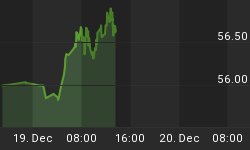The I.M.F. announced that 32 tonnes of gold was sold by them in September. This included the 10 tonnes to Bangladesh. This leaves around 71 tonnes left to go and we have passed October now. If they sold a similar amount in October then we are down to just below 40 tonnes remaining for sale by the I.M.F. If they continue this pace of selling they will only be left with less than 10 tonnes to sell in December and will complete their sales before the endof this year.
We have no reason to believe that the central banks in the emerging world will then cease buying, so where will they get future stock from? These buyers are not price sensitive, so will have to attempt to buy in the open market, where they cannot buy their own local production. If more central banks than are present now in the open market arrive, they will not be able to use the 'limit' order system to buy gold only when offered. The bullion banks will be able to ask for better offers simply by placing it in the gold Fixing and waiting for the best offer to arrive. This will turn central bankbuyers from 'passive' buyers into 'active' ones.
Why did Eastern central banks buy gold from the I.M.F.?
It would be easy to assume that central banks will not buy more once the I.M.F. completes their sales. Central Banks have been the main buyers of this gold with three central banks taking 222 tonnes and unknown buyers taking the balance. We have to ask, did the central banks take this gold because it was just there and presented in a way that they could acquire it without disturbing the gold price? Or did their belief in a future time when it would help them with problems in dark days influence them? Or did they buy it because it is a good investment and counters the decline in currency values they fear might happen. All these motives are good ones and justify conservative central banks buying of gold.
However, there is one aspect that has not really considered. You will note that the central banks that bought this gold were from the eastern emerging nations. Primarily they were nations stemming from or part of the Indian sub-continent. These nations have always respected gold and considered it money without wavering over the centuries. They have never been totally convinced that paper money is 'as good as gold', as the West has.
They are all part of the emerging east and are fully aware that wealth and power is moving eastward. It is a completely logical step to believe that the power that the U.S. dollar now holds will move eastwards to some extent. With the stresses and strains this process will entail, it is likely that eastern currencies, to some extent will rise in importance, as the dollar declines. It makes sound investment sense now to lower their dependence on the U.S. dollar and diversify into other currencies. But which ones? The future is so uncertain one cannot be sure of the value of any other currencies. It makes good sense to turn to gold, which history has shown rises in value and usefulness in such days.
Will central banks cease buying after the I.M.F. sales are complete?
Now that they have these amounts in their reserves, will they cease buying? We think not, but any desire to buy more will have to be tempered by the effect their buying in the open market will have on prices. As we discussed above the concept of 'limit' buying will have to give way to a more direct and active approach if gold is to be bought successfully. If there are several central banks present in the market at the same time [we hear that Bangladesh is in the open market still] they will never chase prices, but will lift the limits on their buying so as to cause a slightly faster rise in the gold price. This will allow other investors to come into the market but they will have to chase what remaining stock there is with higher prices.
What will the effect on gold supplies be of a cessation of sales by the I.M.F.? - Subscribers only - Subscribe through www.GoldForecaster.com















